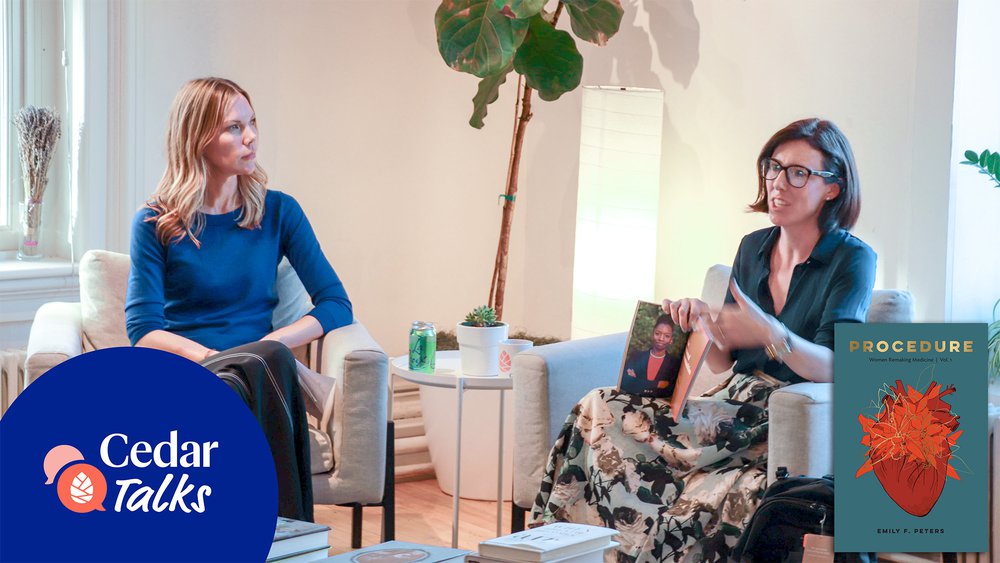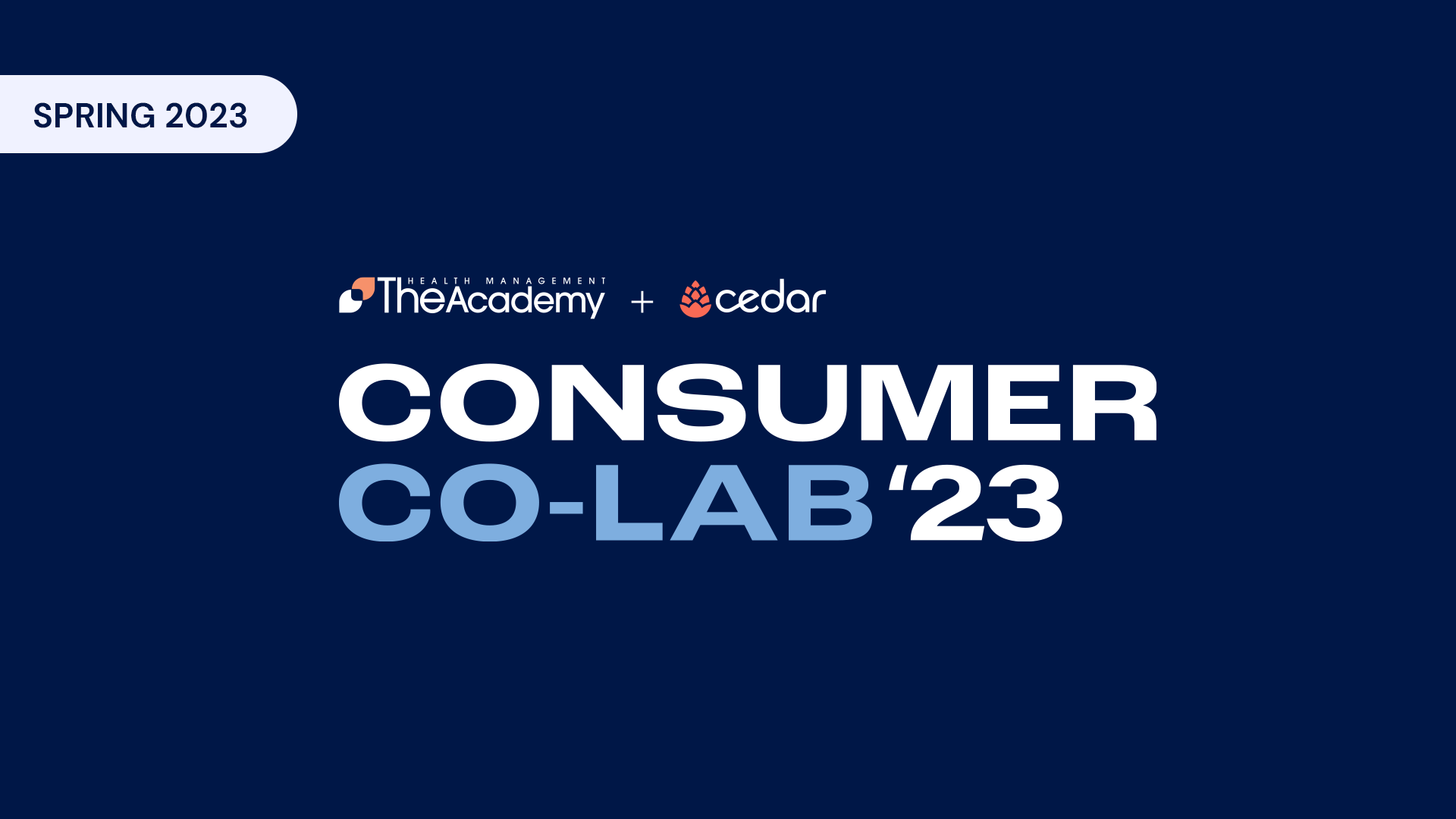Healthcare is filled with patient and caregiver stories ranging from tragic to miraculous. Medical knowledge and technology have advanced to save and prolong lives like never before, yet the industry is also riddled with systemic challenges, including skyrocketing costs, misaligned financial incentives, unnecessary complexities and vast inequities in access to quality care.
The opportunities for improvement are seemingly endless, but so are the individuals who feel compelled to seek solutions and challenge the norms in healthcare. To this end, as part of our Cedar Talks series in September, Cedar hosted Emily Peters, experienced brand strategist and author of Procedure ‒ Women Remaking Medicine. Peters shared her own personal journey as well as insights from her book profiling women who are making a difference in healthcare.
Using personal experience to make a difference
Emily’s story is one of the miraculous. Shortly after giving birth to a healthy baby girl, she nearly bled to death from a postpartum hemorrhage. Thirty-six blood transfusions over six hours saved her life—that’s all the blood in a human body nine times over. Emily was one of the lucky ones; the US has the highest rate of maternal mortality in the industrialized world, and postpartum hemorrhage is a leading cause of complications.
After witnessing the best (and many of the worst) parts of healthcare first-hand, Emily recounts that she wanted to leverage her storytelling expertise to help inspire change in a “broken system that’s hurting doctors, nurses and patients.” The result is her book, Procedure, which shares the stories of 10 different female healthcare leaders.
“I wanted to go beyond telling my own story. I found these amazing women, all with very different approaches to making change. Women who are normal, regular people like us ‒ not just the Michelle Obamas of the world, but those who are less acclaimed for their impact,” said Emily. “No matter what kind of leader you are, everyone has something they can do to help make the world better.” She cited examples like Dorrie Fontaine, RN, Dean of the UVA School of Nursing, who leans hard on kindness and throws birthday parties for her colleagues. And Rhea Seddon, MD, the first female astronaut and one of the first female surgeons who brought teamwork from NASA to her work in medicine.
Uncovering common traits in female leaders
Emily said she noticed a recurring theme among women change makers: bravery. When faced with the choice to act or stay quiet, the women in her book chose to do something and take a risk. Interestingly, none of them considered themselves brave at the time. Like Esther Choo, MD, who became a social media phenomenon by voicing compassion for a biased patient who refused treatment from her because she was Asian. 40,000 Twitter followers later, she is now a powerful voice for equity in medicine. And there’s Hemalee Patel, MD, who after years of treating chronic disease patients at the last stages of their life, left her traditional role in a top hospital to start a lifestyle medicine practice with the goal of making healthcare healthier.
“I think women tend to devalue their contributions and what makes us special. The power of these women came out of our process of talking about the amazing things they did,” said Emily. Her advice to all career women: do more in your work culture to lift each other up. Support each other in meetings. GIve each other positive AND constructive feedback to inspire growth. Start telling your stories. Be bold.
Innovating with kindness
When it comes to improving the patient journey overall, Emily urges healthcare leaders to focus more on empathy and clarity. “We are leaders in innovating new treatments and specialties, but we haven’t figured out how to give patients what they deserve: more transparency. Why can’t I understand why I was charged over half a million dollars for my labor? Why can’t I choose a hospital based on how much it will cost me? If we are supposed to be a free market system, let’s act like one. There are ways to use the best parts of our American values to create change.” Like electing more politicians with healthcare expertise, for example.
Another opportunity for change is better technology, not more. Emily pointed out that physicians are usually the first to adopt new iPhone releases. So why shouldn’t the healthcare industry be equipping them with the best technology to help alleviate burnout and so they can spend more time with patients? “We have placed even more burden on doctors with clunky, inflexible tech that’s dragging them down. The suicide rate for doctors is twice that of the general population ‒ the burnout factor is huge, and the added stress of insufficient technology and endless data entry requirements isn’t helping. We have to make it easier for them to do their job.”
Emily reminded us that while there’s a lot about the healthcare system that is broken, a little bravery and kindness we can all help make a difference. Grab your copy of Procedure (Vol. 1) and stay tuned for Volume 2 coming out in 2020.
Interested in learning more about making the healthcare system more transparent and patient-centric? Download the 2019 Healthcare Consumer Study to understand the most important trends impacting patients.
Cedar Talks is a thought leadership series focused on connecting the Cedar team and broader community with tech entrepreneurs who are dedicated to solving hard problems with great design, thoughtful engineering and industry expertise.
Join us for future Cedar Talks. Sign up to be added to our mailing list.



